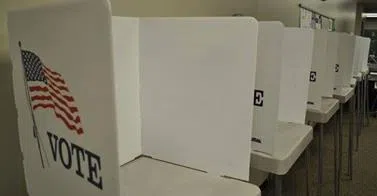
ST. PAUL, Minn. (Minnesota Reformer) – Minnesota voter turnout fell in 2024 from the record high levels set in 2020, according to a release from Secretary of State Steve Simon’s office.
“Early estimates would indicate a turnout of around 76% for the 2024 Election,” according to the release. “This exceeds the 2016 turnout of 74.72% but falls short of the record-making voter turnout of 79.96% in 2020.”
As usual, Minnesota’s turnout was far higher in 2024 than the national average, and the Minnesota decline mirrors preliminary estimates of the national turnout drop.
But Minnesota’s turnout decline was not evenly distributed, according to a Reformer analysis of voting returns. Turnout dropped sharply in Democratic strongholds like the Twin Cities and Rochester. And in many of the deeply conservative rural areas of the state, turnout actually rose.
For each county, we’ve calculated turnout as the number of votes cast in the presidential race, divided by Census Bureau estimates of the voting-age population. The overall geographic pattern is similar to 2020 and earlier years: In 2024 turnout was highest in the Twin Cities suburbs, and lowest in the western regions of the state.
The highest turnout rates were in Carver and Scott counties in the metro area, which approached 90% participation. As in previous years the lowest turnout was in Mahnomen county in the northwest, where most of the White Earth Reservation is located. Turnout there was less than 60%.
But there have been some notable shifts since 2020, as the map on the right shows. In Hennepin County, for instance, there were roughly 35,000 fewer votes cast in 2024, despite the adult population growing by around 40,000 people. As a result, the turnout rate in the county fell by around 8 percentage points, from 86% in 2020 to 78% in 2024.
Similar dynamics were at play in Ramsey County, which saw a 6 percentage point drop. Suburban Dakota County also fell by roughly that much, as did Olmsted County, home of Rochester and the Mayo Clinic.
The Arrowhead counties, another traditionally Democratic region, also saw significant turnout declines.
On the other hand, in many deeply Republican counties across greater Minnesota — particularly in the north central region — turnout actually increased. The greatest growth was in Lincoln County in the southwest, where turnout rose by 5 percentage points. Republican Donald Trump carried the county by a 38-point margin.
In short, turnout declines were concentrated in DFL strongholds, suggesting a major partisan enthusiasm gap. Vice President Kamala Harris, for instance, won nine of the state’s 87 counties. Those counties together cast roughly 54,000 fewer votes than they did in 2020.
But in the remaining 78 counties in the state, which all supported Trump to varying degrees, around 27,000 more votes were cast than in the previous presidential election.





Comments